Best mountain bike brands – our pick of the top companies with reviews of their best bikes
From the pioneers to the new kids on the block, we examine the brands that have shaped the mountain bike discipline
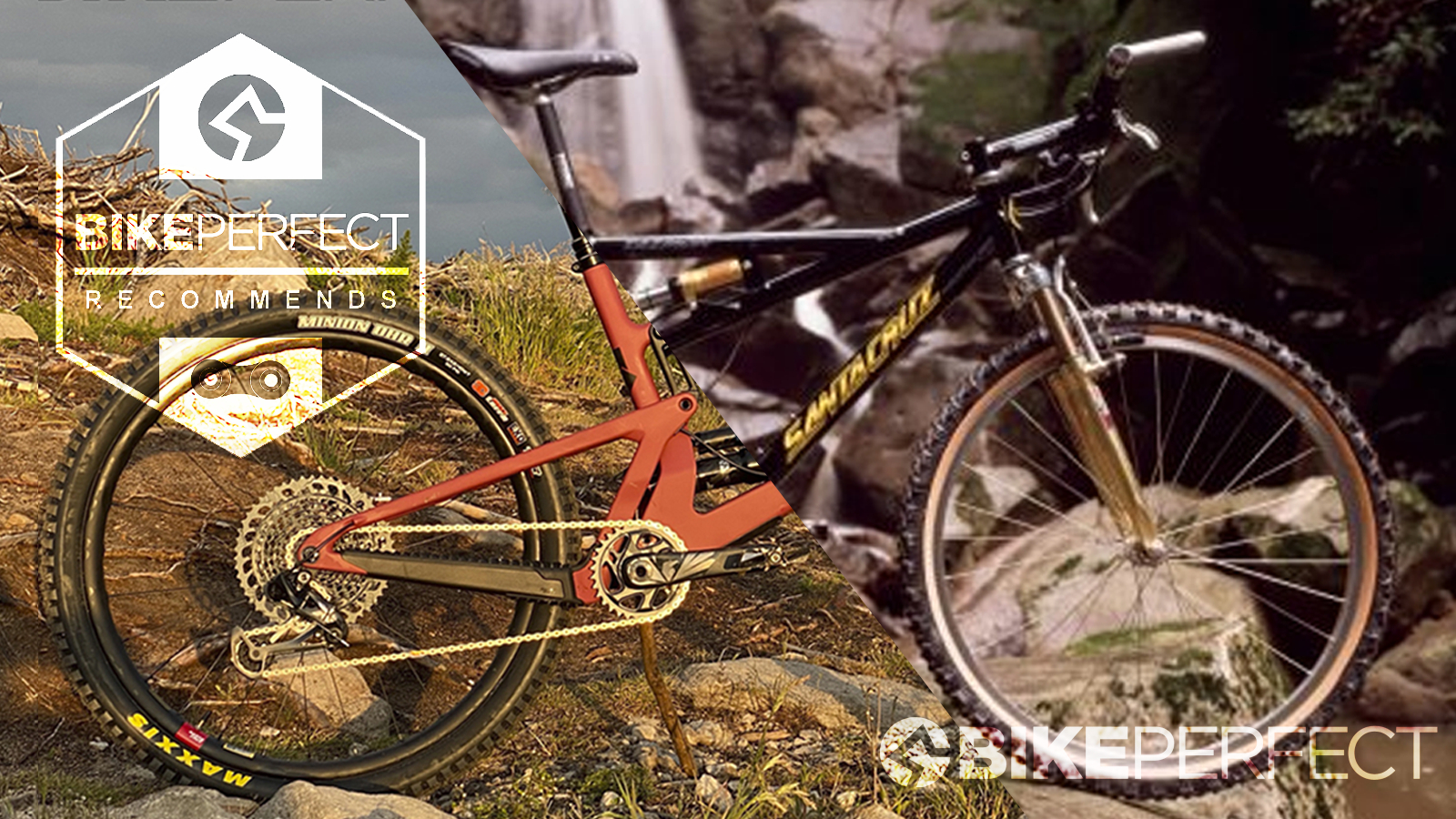
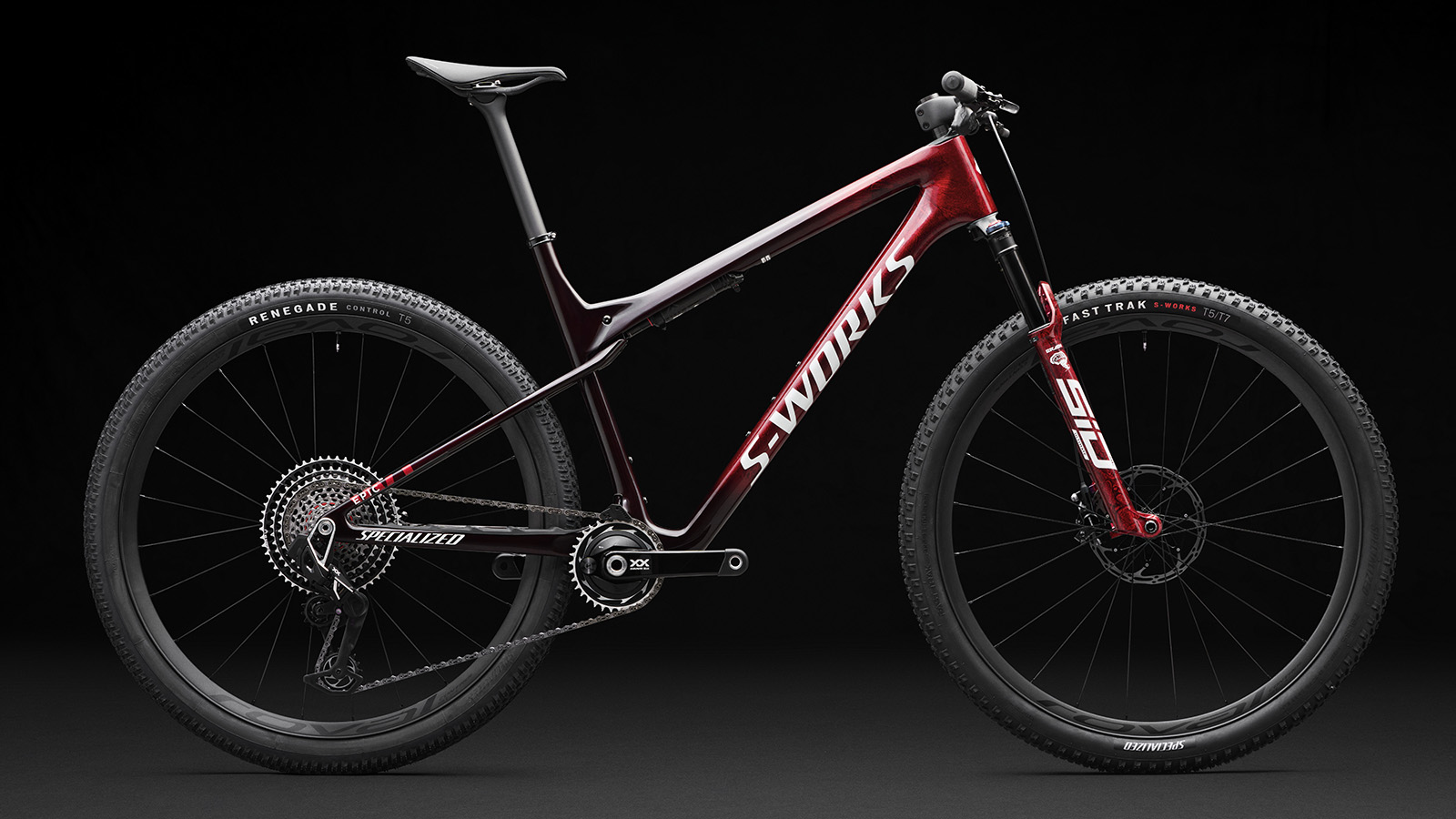
1. Specialized
2. Trek
3. Giant
4. Santa Cruz
5. Canyon
6. Yeti
7. Pivot
8. Cannondale
How we test
Whether it's from one of the best mountain bike brands or not, the bike you ride is a very important purchase. Whether a top-shelf version with all the latest tech and a price to match, or something more modest, it's still a serious commitment. Choosing the right one for you can be difficult as there are a seemingly endless array of options and new ones coming on the market all the time.
There are some brands that stand out though. The bikes they make are some of the finest available and they keep making knockout hits. If you are looking for a great mountain bike, starting with a great brand isn't a guarantee, but reputation still counts for a lot.
With that in mind, we've put together some of the bike companies we reckon consistently make many of the best MTBs out there. Keep reading to see our list of the best mountain bike brands and our expert reviews of the top rated models they've recently released.
1. Specialized
Specialized Bicycles is one of the biggest and most well-known names in the industry. Getting there has been a 47-year journey with some industry-defining bikes, some missteps, and a lot of innovation. The first few years were focused on road cycling and led to the first Specialized product, a tire. From there, the next major move was recognizing the importance of an emerging scene.
The company became synonymous with the American mountain bike scene with the release of the first Stumpjumper in 1981. It brought mass production and economies of scale to a fledgling niche and maybe changed the world. The Specialized Stumpjumper lineage continues to this day although the modern-day equivalent is unrecognizable when compared to the original model. Specialized is arguably one of the most influential brands on the market that is constantly developing new technology by utilizing its own Innovation Center R&D test lab and wind tunnel – which it calls the Win Tunnel.
Specialized now produces bikes for all disciplines from downhill mountain biking to aero time-trial bikes. What they all have in common is that they are consistently some of the best bikes that are available on the market.
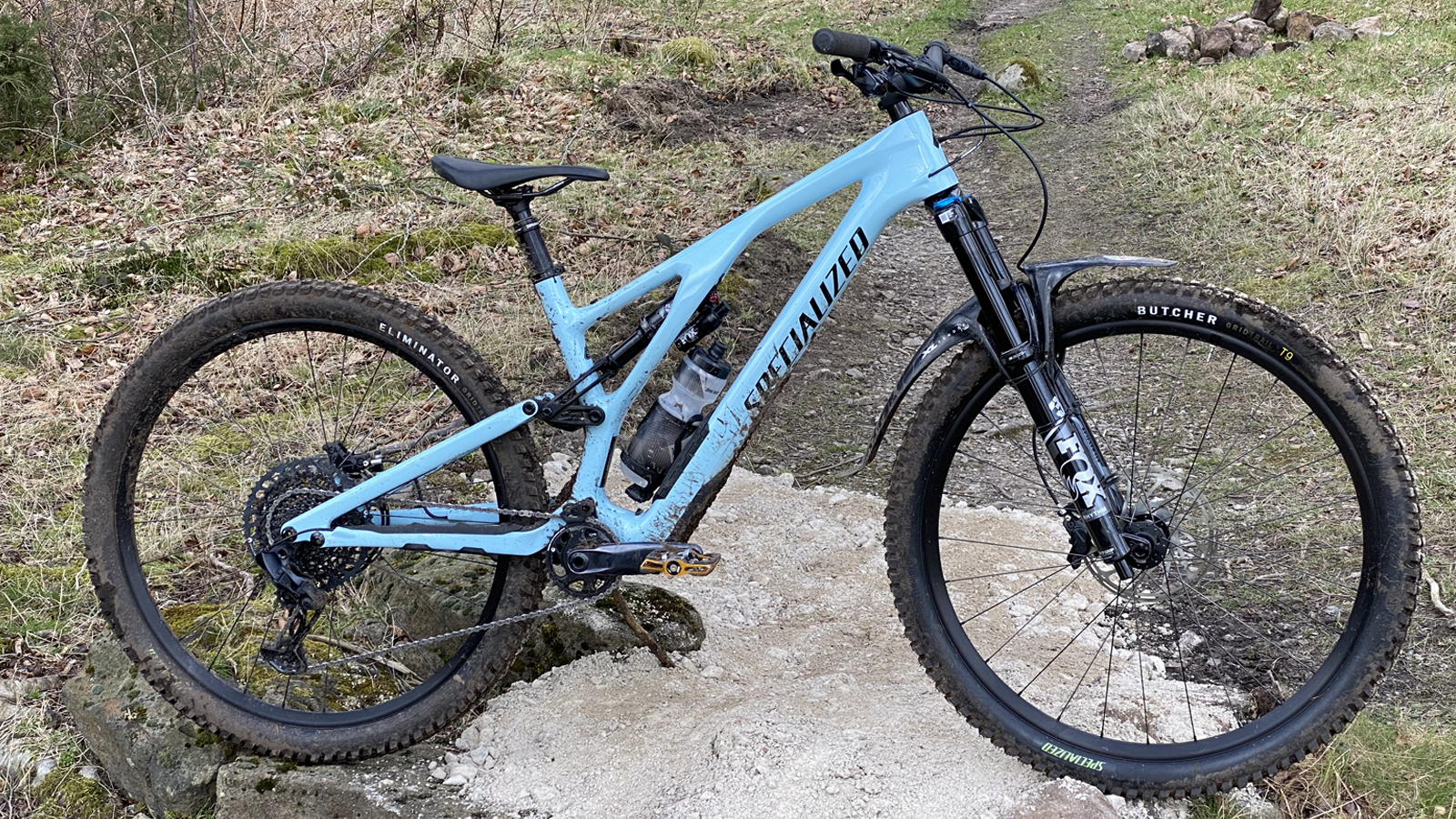
Specifications
Reasons to buy
Reasons to avoid
The Stumpjumper model was the first in a long line of mountain bikes bearing the name Specialized. It remains in the lineup over 40 years later but the innovation has never stopped. The Evo Comp is the most affordable bike in the range and presents excellent value, not just because you get front and rear triangles made from Specialized's FACT 11m carbon but also its versatility on the trails.
In our tests we found its low weight and lively ride feel kept it feeling bright on flow trails and efficient on bigger days out on the trail. Take the Stumpjumper Evo Comp on a more gravity-fed day and the slack geometry and controlled and balanced nature really comes into play.
The frame is packed with useful features, especially if you are a bit of a bike setup fettler. The Stumpjumper comes standard with an eccentric headset race cup which either steepens or slackens the head angle by one degree and a chainstay flip-chip that takes another 0.5-degree off the head tube. There's also an increased-volume SWAT Door integration with a 650ml bladder for more liquid storage.
Our reviewer Guy Kesteven summed up: "An outstandingly practically innovative aggro all-rounder with a superbly balanced, hugely enabling but not intimidating overall ride and a real sweet spot performance to price ratio."
For all the details and to find out what over four decades of evolution rides like, check out our full review of the Specialized Stumpjumper Evo Comp.
2. Trek
Like a lot of mountain bike companies, Trek is a brand born from a lack of offerings. The dream was to start a nationwide chain of stores in America in the early 1970s, but things didn't turn out like that and a lack of available bikes required a re-think. Before an era of globalization, good American bikes weren't available so Trek set out to change that. They envisioned high-quality options from the middle price points all the way to the top shelf offerings but the focus was on road bikes.
Although that early focus was road bikes, Trek recognized talent and made business moves to bolster its mountain bike expertise too. While Trek was growing on the eastern side of the US, mountain biking was reaching critical mass on the west coast. In 1993 Trek made the Gary Fisher name part of its company and brought a brand associated with the first commercially produced full-suspension bicycles into its fold. Then in 1995, the company purchased Bontrager cycles – a move that brought Keith Bontrager, responsible for the design and patent of a composite fork crown that later showed up on the first suspension fork, into the organization.
Since then Trek, like Specialized, has been one of the pivotal brands when it comes to introducing new tech into mountain biking. Under the Gary Fisher name, it was the first brand to make a commercial push with the 29er wheel. While that took some development and weathered much criticism, Trek has certainly come out on the right side of history with 29ers becoming the most common wheel size in almost every MTB discipline. Trek was also one of the brands that made huge inroads by introducing carbon fiber to mountain biking with its OCLV development.
While Trek has seen racing success in all disciplines, arguably its biggest impact is in downhill mountain biking. The Trek Session format has been around since 2006 – although it didn't start looking like a Session until 2009. Since then it has become the most successful downhill bike with Sessions being piloted to more World Cup wins than any other bike.
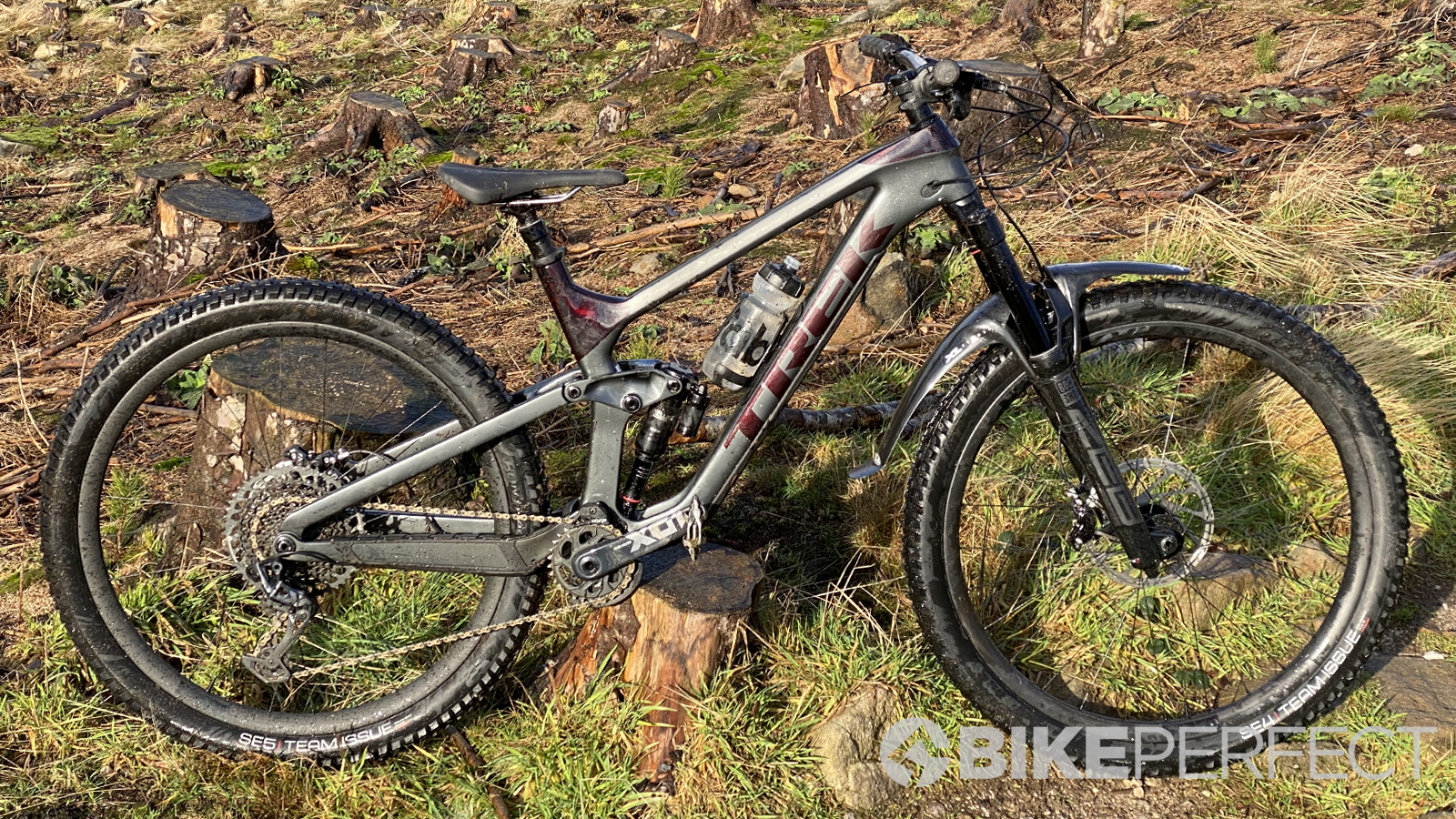
Specifications
Reasons to buy
Reasons to avoid
Trek uses its OCLV carbon to form its best enduro mountain bike, the Trek Slash. Revamped in 2021, it got a geometry make-over as well as some new features and RockShox's take on Trek's proprietary Thru Shaft shock technology.
Enduro is first and foremost a race format and while all brands tout their bikes as race-ready machines, very few communicate their extreme course-crushing performance with as much clarity and authority as Trek’s Slash.
While we think the spec could benefit from a few tweaks, the base performance, capability, and practicality that the Slash offers are typical of a bike from Trek no matter what price range you are looking at. Our reviewer Guy Kesteven found it ragingly fast and precise, saying: "Evolved, stability-boosting geometry, superbly sorted suspension baseline with dialed on-the-fly fine tweaking and excellent pedaling response, make it one of the most speed-hungry, high-velocity bikes we’ve ever ridden."
Check out our full review if you want to know more about the Trek Slash 9.9 X01.
3. Giant
Giant is widely recognized as one of the largest bicycle manufacturers in the world. Not only does it produce a huge range of bikes across all disciplines and price points under the Giant branding, but it's also a manufacturer for many other well-known brands. A rooted background in manufacturing has made it one of the leading brands when it comes to producing high-quality bikes in both aluminum and carbon fiber.
Giant has been in the mountain bike scene for a long time and has often been at the cutting-edge of design and performance, with developments such as the Maestro suspension system, which was introduced in 2005, and its advancements in frame manufacturing, especially with its own Aluxx aluminum.
Economies of scale and manufacturing expertise mean that Giant can produce bikes that are extremely competitively priced. While most brands will spec OEM or own-brand kit, no one does it to the extent as Giant, who produces everything from grips to suspension forks. In fact, it's not uncommon for Giant to kit out a bike with all but the drivetrain being Giant branded. The Giant components are usually good quality too and it means Giant is often able to undercut most other brands offering features at a price point that you might not see on other bikes.

Specifications
Reasons to buy
Reasons to avoid
Giant gave its cross-country Anthem a radical update in 2022 and the results brought it right up to date with the demands of the increasingly technical nature of cross-country mountain biking. The slacker contemporary geometry, bump in travel, and lower weight flex stay suspension means the Anthem is far more capable than its predecessor.
The componentry Giant specs on the Anthem reflects this too and we really felt the benefit of the stouter Fox 34 fork and 2.4in Rekon tires when we tested Giant's Anthem Advanced Pro 29 1 model. However, these aren't the biggest tech talking points of the bike. The Anthem Advanced Pro 29 1 model is one of the few bikes on the market that is equipped with the Fox Live Valve system. This electronic suspension system automatically controls the suspensions and reacts to whether you are climbing, descending, or riding over rough terrain.
The result is one of the most capable cross-country mountain bikes we have ridden. Superbly confident and composed on descents that should be way above its cross-country remit yet it doesn't give an inch when the trail points up either. The automated suspension takes a lot of thinking out of riding as well, allowing you to get on with riding as hard as you can.
Our reviewer Graham Cottingham found: "There were a number of corners I rode through only realizing upon exiting that I hadn’t actually braked going into them and, if Strava is to be believed, I wasn’t going slower either as I returned from my first ride with a decent haul of PRs."
For more details, we have a full review of the Giant Anthem Advanced Pro 29 1 and our experiences with Fox Live Valve.
4. Santa Cruz
Santa Cruz is a relatively young company. The history of American bike brands starts later than those in Europe but even among its peers, 1993 is late to the game. Late isn't always a negative though. Living in Santa Cruz as modern mountain biking came into the world allowed the founders to be fluent in the needs of the riders. At a time when hardtails were the norm and full-suspension, do-it-all bikes were far from cool, a few guys recognized a need.
The Tazmon was the first Santa Cruz bike and it featured a single-pivot dual-suspension design. Manufacturing of that first bike started in a small garage and grew from there with rider-centric bikes always being the norm. This rider-centric approach has meant that whenever Santa Cruz enters a bike discipline, it often becomes the defining bike in that category.
We can't talk about Santa Cruz without mentioning its sister company Julianna Bicycles. In partnership with ex-pro and six-time US champ Juli Furtado, Santa Cruz developed its first Julianna bike in 1999, credited as the first women's specific mountain bike, which in turn has led to today's catalog which covers all riding disciplines.
Today, Santa Cruz and Julianna continue to hand-assemble all models in its California factory and they stand behind that process. They are so sure of the quality they put out that all Santa Cruz bikes come with a lifetime warranty covering the frame and fork.
Santa Cruz has always drawn a certain level of allure based on its high-quality bikes, but the brand's race endeavors have been a big part of that story, too. The Santa Cruz Syndicate race team has not only been one of the most successful race teams on the circuit but also a hotbed for testing. Santa Cruz has benefited massively from leveraging the experience and knowledge of current and past riders such as Greg Minnaar, Steve Peat, Josh Bryceland, and Luca Shaw.
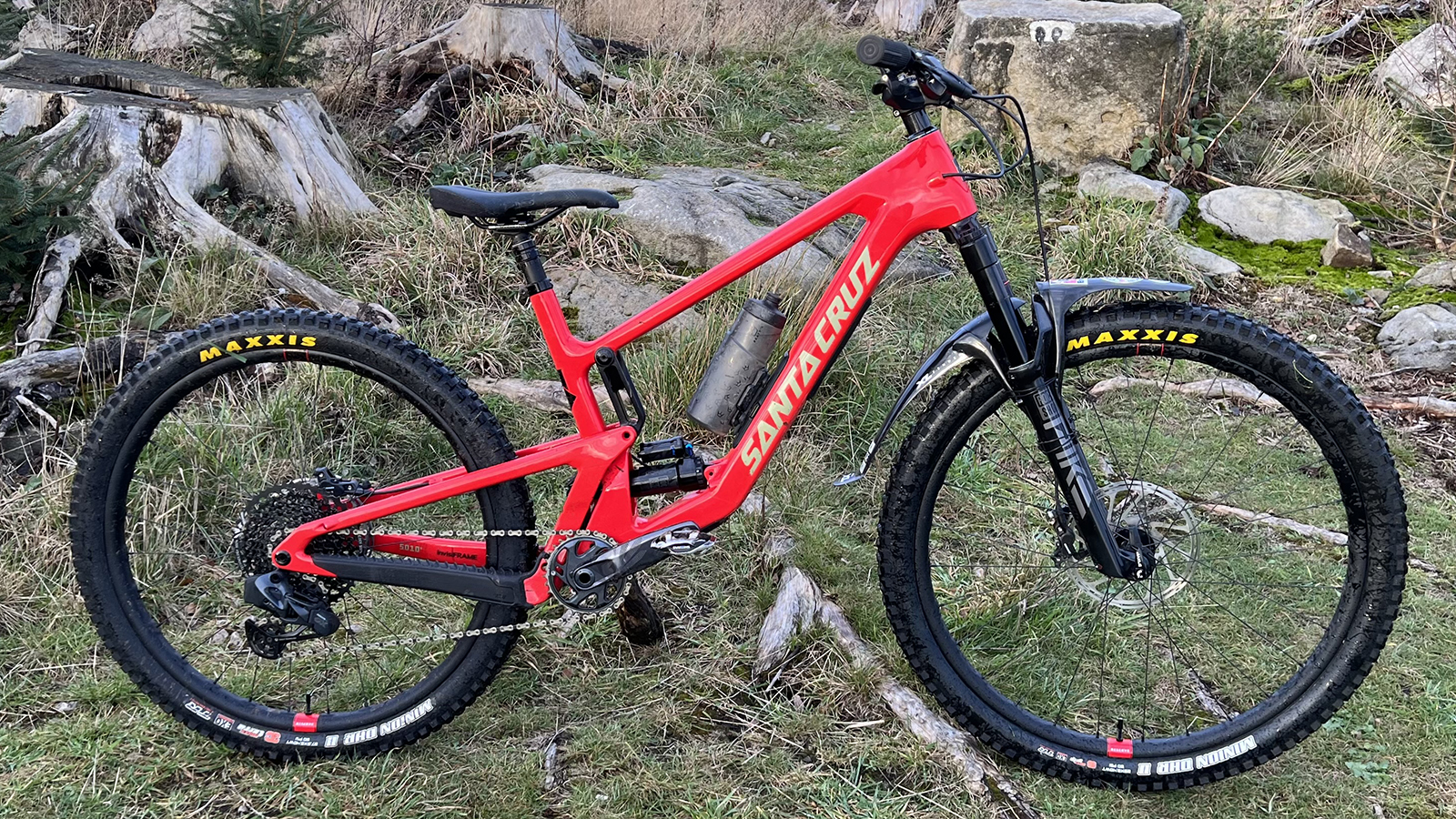
Specifications
Reasons to buy
Reasons to avoid
Through the Santa Cruz 5010's various iterations, it’s picked up one of the strongest cult followings of any bike from any brand. The latest V5 model calms things down a bit with a 29in wheel up front, less pedal reactive suspension and features like internal storage which make it nearly a kilo heavier than the V4.
The GX AXS RSV we tested is the most expensive C framed bike, but it’s a sweet spot in terms of componentry. The Pike Select+ fork gets the fancy Charger 3 damper with low and high-speed compression adjust and Maxima Plus Dynamic fluid, but avoids the random choking curse of the longer bushings in the Pike Ultimate. The Select+ Super Deluxe shock is similarly smart internally, but just has a simple two-position compression (open or pedal) damping lever rather than a four-position dial.
We found the V5 an absolute peach to ride and a perfect fit for where aggressive trail riding has headed. Yes it’s heavier and slower rolling (given the tire spec) than before, but we can’t think of any shorter travel trail bike where this hasn’t happened in its last generation. That weight is getting you genuinely useful internal storage and a far more capable, rather than chaotic, front end vibe.
Typically for Santa Cruz, it’s a great practical choice for hard riders in terms of bearing design, easy servicing, frame protection and overall strength. And the fact that frame, bearings, wheels and bars are all lifetime-warrantied makes investing in the RSV spec a wise investment not just an indulgence.
Our reviewer Guy Kesteven said: "The bottom line of all the rebalancing and obsessive dynamic detailing is that the new 5010 is a bike that makes you feel like an absolute hero when you point it down your favorite tech trail and let rip."
Check out our full Santa Cruz 5010 GX AXS RSV review for more details.
5. Canyon
Canyon didn't invent the direct-to-consumer sales model, but the German brand is arguably the first brand that really made it work in the bike industry. The combination of superbly designed bikes and often unbelievable price-to-performance ratios means that Canyon has been a massive hit in an industry that has historically been bricks and mortar.
It hasn't always been smooth sailing though. In 2016 Canyon suffered some growing pains which caused significant delays in shipping. However, since then Canyon has gone from strength to strength, producing industry benchmark bikes from some of the best budget mountain bikes all the way up to dedicated race specific platforms.
If you are confident that you know what you want and are happy with a little out-the-box wrenching (Canyon has gone to a lot of effort to make this as streamlined and easy as possible), then it's really hard to go wrong buying a bike from Canyon. In fact, your biggest problem will be availability as high demand often means bikes are out of stock.

Specifications
Reasons to buy
Reasons to avoid
The bike industry is pretty guilty when it comes to declaring that a bike is a true all-rounder, do-everything, or using the super-cliched and meaningless phrase, 'quiver killer'. That said, if you are looking for a modern trail/enduro mountain bike then the Spectral is one of the best bikes on the market.
The recently redesigned Spectral frame is a demonstration of Canyon's design ethos – utterly sorted so that on first impression you feel so comfortable that it takes a while to realize how good it actually is. Considering the Spectral has figures that are easily enduro shreddable it climbs confidently with crux-crushing traction. Point it downhill and the Spectral beautifully blends calmness and control with a playful character that keeps rewarding you the faster you go.
Even better is Canyon's range of options for the Spectral. While we loved the CF8, Canyon also does a premium Spectral CFR and a budget alloy range which both share the same geo and design features. What's more, if you aren't a fan of 29er wheels, Canyon also offers the Spectral in 27.5 and mullet wheeled formats.
Our reviewer Guy Kesteven reported: "While it does feel remarkably smooth and calm off the top and it’s perfectly happy to cruise, the core of the bike is an impeccably balanced, firmly supportive and accurate tracking technical trail and DH weapon. One that increasingly comes to life, popping, drifting, sending and playing the harder you push it."
Find out more info in our full Canyon Spectral 29 CF8.0 review.
6. Yeti
In 1985 a welder from California named John Parker turned his passion into a business and founded Yeti. His background in Hollywood special effects and welding prowess helped him chase his interest in mountain bike racing and from the very beginning, Yeti was synonymous with racing. Thanks to the success of legendary racers like John Tomac, Juli Furtado, Missy Giove, and Myles Rockwell, Yeti was quickly on the map in a big way.
In 1995, as mountain bike racing hit a fevered pitch, the larger, and well-funded, Schwinn purchased the brand. Yeti needed capital to expand and Schwinn needed the expertise of a proven winner. In early 2001, as the fortunes of Schwinn changed, two Yeti employees purchased the company and led it through a new period of innovation. Racing is still an important part of the company culture and the trademark Yeti turquoise color continues to be a mainstay on podiums.

Specifications
Reasons to buy
Reasons to avoid
The new Yeti SB120 is a 120mm trail bike featuring Yeti's unique Switch Infinity suspension system and the SB120 is the shortest travel frame that uses it. Switch Infinity is a four-bar system with a sliding pivot to alter the pivot position for greater control of kinematics. It's the rise-and-fall movement of the lower linkage that gives the SB120 a remarkably nuanced feel, adding even more sensitivity, auto grip, and flutter-fast responsiveness compared to purely short linkage systems.
That makes the SB120 an overachiever on descents with flowing rocky, rooty sections with a ridiculous amount of speed sustain for a 120mm travel bike. Travel is available when needed but support and ride height is maintained through even the hardest corners and compressions.
It's not just the suspension that's spot on either. The SB120 has an uncanny ability to make everything from tires to grips to saddle, to mid-corner or black-grade, boulder run body position feel totally in the right place. It's a tribute to how dialed the overall geometry is on the SB120; it's nothing radical, just a brilliant place to be to enjoy all sorts of trails.
Our reviewer Guy Kesteven summed up: "If you asked me right now what’s the best short travel trail bike I’ve ever ridden, it’d be this one. I just need to work out how to get one to keep for a bit longer."
You can read more in our first ride review of the Yeti SB120 T1.
7. Pivot
Chris Cocalis started Pivot in 2007 in Phoenix, Arizona, when he recognized a revolutionary suspension technology and licensed it. The Mach 4 was the first bike from the company and it used the DW-link suspension design. One of only three brands who licensed the technology at the time, it's a system that isolates the rider from movement in the suspension as they pedal and brake. From that start, Pivot bikes established itself in only a few short years as one of the most premium brands available.
Although Pivot is a young MTB brand, it comes from a founder with a deep well of experience in the industry. Before Pivot Chris started building bikes, and components, in the mid-80s, he was a BMX racer and bike shop manager who built what he couldn't find, and eventually founded Titus bikes in 1991 which he sold in 2006.
Starting Pivot was an opportunity to do things differently. Although the technology helped define the brand it was the culture of giving back that kept it sustainable. The focus is on making the best and that's what you can expect.
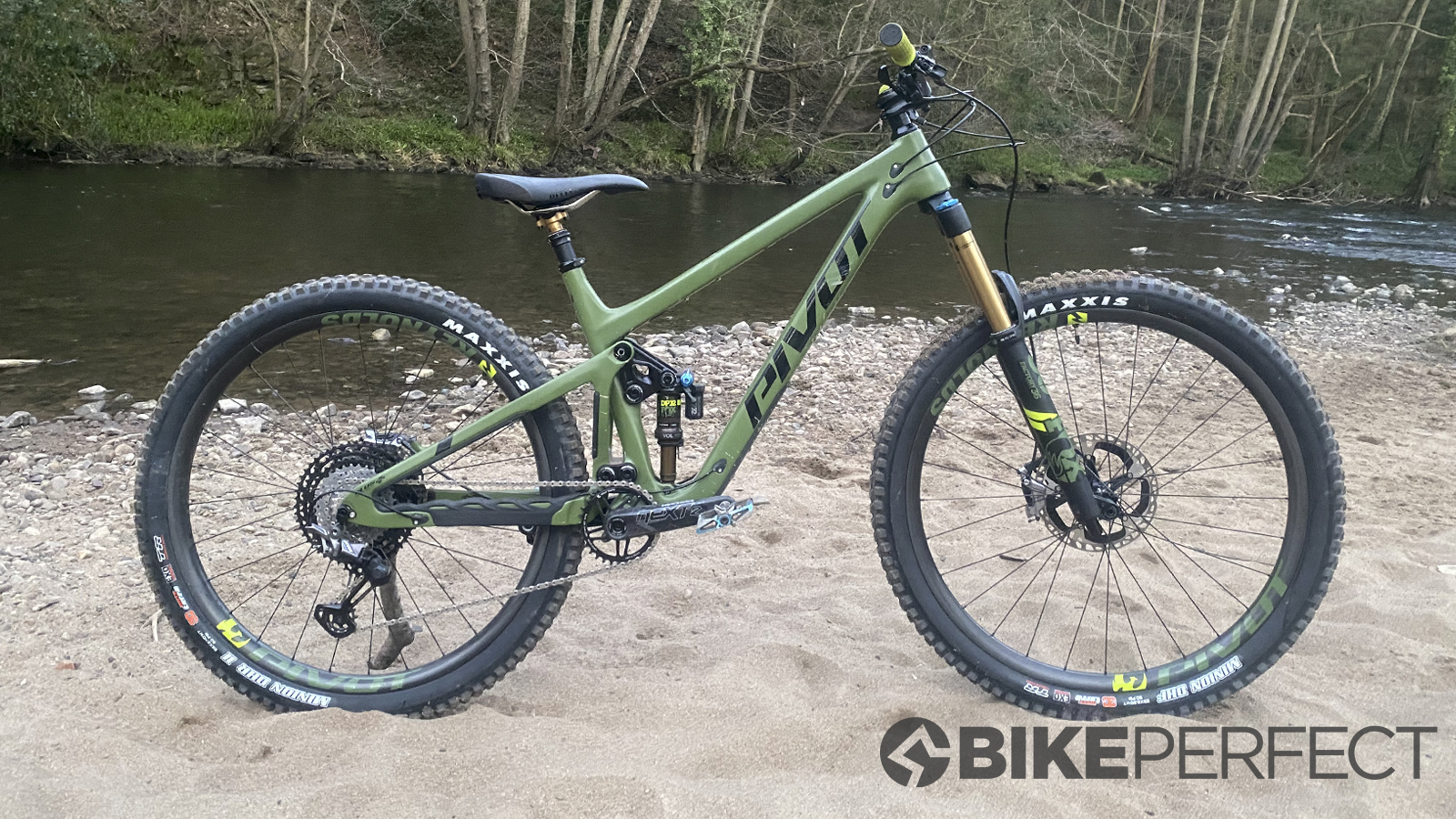
Specifications
Reasons to buy
Reasons to avoid
Every trail bike promises a dual-natured personality. The allure of both downhill prowess and pedaling and climbing efficiency. When it comes to Pivot and the Switchblade, they deliver on that promise through the technology that started the company, the DW-Link suspension.
DW-Link is a system designed by Dave Weagle that keeps pedaling and braking from affecting the suspension. In the case of the Switchblade, it's paired with either a 29er, mullet, or 27.5+ wheel size and comes together for a design that brings versatility to the table. The DW-Link system delivers a stable pedaling platform on the climbs and a super smooth yet progressive suspension action when descending,
It's definitely not cheap, but the Pivot Switchblade XTR comes with some serious kit including Fox suspension, Reynolds Black Label Enduro wheelset, and of course, Shimano's XTR groupset. Pivot offers loads of build options too, starting at the Ride XT/SLX/DT M1900 wheel mix to the Team XX1 AXS Live Valve super bike build.
In our tests we found the Switchblade felt outstandingly ‘bright’ and eager straight away. The tight Reynolds wheels, stiff, compact frame, short linkage, short but super-wide back end and short offset fork gave a vivid and immediate connection to the trail. Our reviewer Guy Kesteven summed up: "Its ability to turn every section of trail into an ultra high definition pop, rip and power through playground is as good – if not better – than any other bike we’ve ridden."
For more information, we have a full review of the Pivot Switchblade Team XTR.
8. Cannondale
Cannondale has always been at the forefront of innovation in the American bike landscape. The company actually didn't start with bikes though. Founder Joe Montgomery began at a loft above a pickle factory across from the old Cannon railroad line in Connecticut. Early offerings included backpacks and trailers to transport bikes for camping. The first Cannondale bike came in 1983 along with a revolutionary approach to working with aluminum. A year later, in 1984, Cannondale came to market with the SM500 mountain bike. It featured BMX styling and a European spring saddle.
Despite all the early success, the company experienced a bit of a rough patch declaring bankruptcy in 2003. It was later purchased by Dorel Industries, who owned the brand until last year which brought another change of hands to Pon Industries. Today Cannondale sits with strong backing among the new world's largest bike manufacturers, including Focus, Lapierre, Santa Cruz, and GT among others.
Cannondale is a brand that's not scared of producing bikes that are unique and unusual, something which is most obvious with the brand's Lefty fork. While the brand has had success in the gravity markets, its F-Si and Scalpel cross-country bikes are its most notable successes. That could change though with the redesign of the Jekyll enduro bike as well as sightings of a prototype downhill bike with two shocks.

Cannondale Jekyll 2
Specifications
Reasons to buy
Reasons to avoid
The new Jekyll comes in as a statement that Cannondale is back in the big enduro bike game. The Jekyll combines many firsts for Cannondale, in a single-crown mountain bike platform. Engineers have constructed a four-bar suspension system that sits low in the main triangle, with chain influence on the kinematics reduced by a high pivot.
Cannondale uses much of its existing design ethos in the Jekyll too with its Proportional Response design, which has size-specific geometry and suspension, and Ai offset to increase rear-end stiffness and clearance.
Designers wanted to lower the Jekyll’s center of gravity, and its frame features a twin-spar downtube. With the shock sitting so low it's effectively in the downtube. This is a bike targeted at committed enduro riders, who never shy away from any black-rated descent.
How we test mountain bikes
All the mountain bikes tested here have been ridden in a wide range of conditions, from bone dry dusty tracks to hammering down rain-soaked trails where grip is at a premium. We also test the bikes over a range of trail conditions, from uplift DH and enduro venues to pedaling steep natural runs. We ensure to test the bikes over a number of months to see how they fare over time and you'll often find us switching bikes mid-ride to make comparisons between different models.
Meet the testers
Why trust BikePerfect
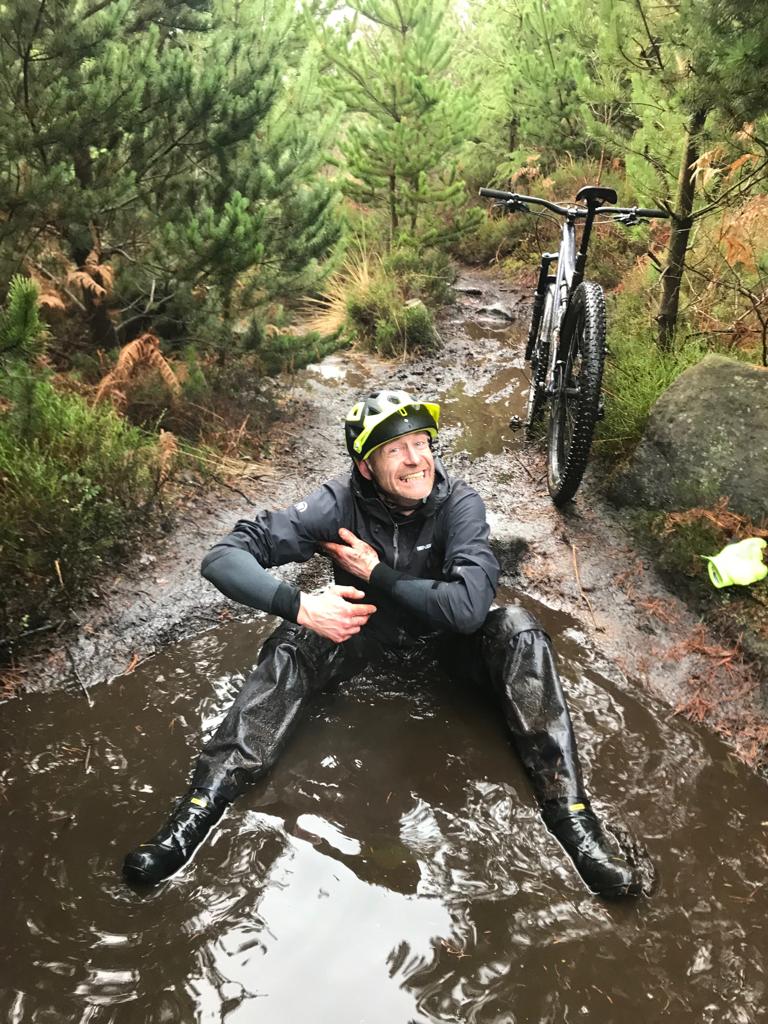
Guy's been testing and writing about mountain bikes since the early nineties and we're betting than he's tested more MTBs than anyone else in the UK. He's no stranger to enduro racing either and has raced in a multitude of different events.

Graham is all about riding bikes off-road with almost 20 years of riding experience covering downhill, enduro, and gravel. Based in Edinburgh, he has mountain biking and gravel riding right on his doorstep.

Graham Cottingham joined the BikePerfect team as our senior tech writer in 2020. With over 20 years of riding experience, he has dabbled in downhill, enduro, and gravel racing. Not afraid of a challenge, Graham has embraced bikepacking over the last few years and likes nothing more than strapping some bags to his bike and covering big miles to explore Scotland's wildernesses. When he isn’t shredding the gnar in the Tweed Valley, sleeping in bushes, or tinkering with bikes, he is writing tech reviews for BikePerfect.
Rides: Cotic SolarisMax, Stooge MK4, 24 Bicycles Le Toy 3, Surly Steamroller
Height: 177cm
Weight: 71kg
